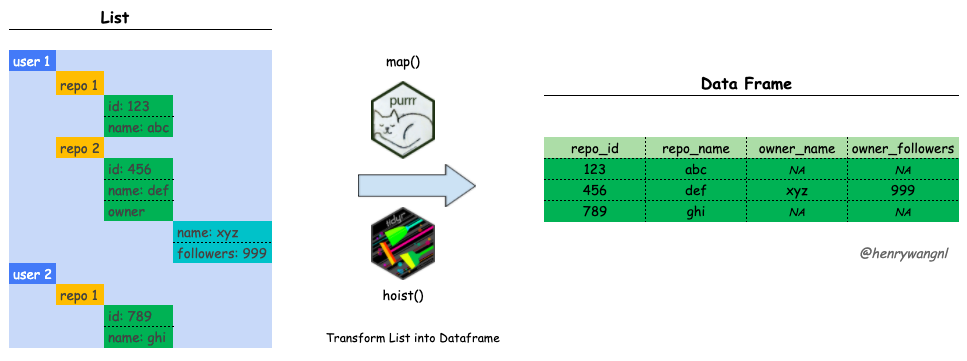As a data structure in R, list is not as familiar to me as vector and dataframe. I knew that list is often returned by function calls but I didn’t pay much attention to it until I started working on the API wrapper package RLeadfeeder. It turned out that list can be very useful to hold all kinds of data returned from API platforms and I had to make an effort to learn how to work with it, namely extract useful elements from a list and turn them into a dataframe.

This post is an example of how to transfrom a list into a dataframe with two different approaches: tidyr and purrr. The packages used in this post are as follows:
Continue reading